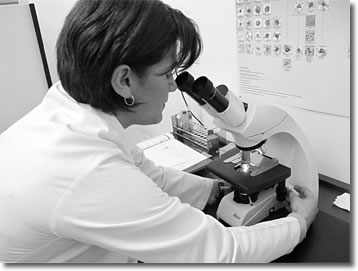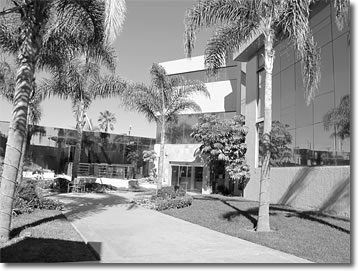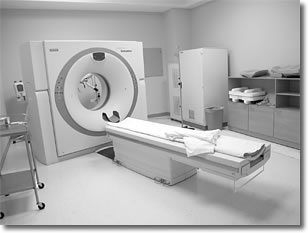www.cancerdecisions.com
A Visit to the Tijuana Clinics
In 1976, while still employed by Memorial Sloan-Kettering Cancer Center, I sneaked away from a scientific meeting in Anaheim, California, and made a visit to the Mexican cancer clinic of Ernesto Contreras, MD. I was amazed at what I found. This "laetrile mill," as the media called it, was a calm and cheerful place; and Dr. Contreras (who performed on the guitar for his patients) was the picture of geniality. Patients seemed genuinely happy to be there (although I could not judge the quality of their medical care). I have since made many return visits to this and other clinics, most recently in January 2011.
Here is a list of 20 Tijuana area clinics that to my knowledge are presently offering treatment to international (mainly US) cancer patients. Mention or discussion of a clinic is emphatically not to be mistaken as an endorsement. For more details please see the report on Mexican clinics available at my website, www.cancerdecisions.com
Clinic Director Founded Website
Alpha Medical Clinic Humerto Barbosa, MD 1983 www.alphamedicalclinic.com
The Gerson Clinic Luz Bravo, MD 2002 none, but see www.gerson.org
Bio-Medical Center Liz Jonas 1963 none
Bioscience Research Institute
at MediExcel Hospital Jose Hernandez Fujigaki, MD 1997 www.bioscienceresearchinstitute.com
Center for Holistic Life Extension Luis Velazquez 1989 www.extendlife.com
CHIPSA Immunological Med Ctr. Victor Ortuño, MD 1990 chipsa.com
CIPAG (ex-IMAQ) Isai Castillo, MD 1984 www.drcastillo.com
Angeles Hospital,
Functional Oncology program Ariel Perez, MD 2008 www.functionaloncology.com
William Hitt Wellness Center John Humiston, MD 1995 www.williamhittcenter.com
Hope4Cancer (Rapha) Clinic Antonio Jimenez, MD 1998 www.hope4cancer.com
Ingles Hospital Sonia Rodriquez, MD 2002 http://ingles-hospital.com
Insulin Potentiaton Therapy
at Angeles Hospital Donato P. Garcia, III, MD 1988 www.iptldmd.com
International BioCare (IBC)
(including Alivizatos Program) Rodrigo Rodriguez, MD 1975 www.biocarehospital.com
Issels Vaccine Program
at Oasis of Hope Hospital Drs. Jimenez and Gomez 1996 www.issels.com
Mission Medical Clinic James Gunier, HMD 1984 www.missionmedicalcenter.com
Oasis of Hope Hospital Francisco Contreras, MD 1970 www.oasisofhope.com
San Diego Clinic Filiberto Muñoz, MD 1998 www.sdiegoclinic.com
Sanoviv Hospital M. Wentz, PhD 1998 www.sanoviv.com
Scientific Regeneration Institute Neil C. Norton, MD 1968 www.cancervictors.net
Stella Maris Clinic Gilberto Alvarez, MD 1990 www.stellamarisclinic.com
These clinics are predominantly located either in the downtown Tijuana business district (a few minutes from the San Ysidro border crossing) or else in the Playas de Tijuana suburb, about 20 minutes to the west. A few are located farther down the southern coast, in or near Rosarito Beach.
Some of these clinics have been treating international cancer patients since the early 1960s. They were established in the wake of the passage of the Kefauver-Harris Amendment to 1962 Federal Food, Drug and Cosmetic Act, which resulted in a major expansion the Food and Drug Administration (FDA) powers.
The first Tijuana cancer clinic was the Bio-Medical Center, established to provide the Hoxsey herbal therapy to US patients. Next came the Contreras Clinic (now Oasis of Hope Hospital), which in turn spawned a succession of laetrile (amygdalin)-oriented clinics. In the late 1970s came the first clinic offering Max Gerson's dietary therapy.
Initially, it was mainly Norteamericanos who established the clinics and then hired Mexican doctors to staff them. Eventually, however, Mexicans demanded and obtained a greater share of this business. Today most of the clinics are owned and operated by Mexican nationals (some of whom have US citizenship and live on the US side of the border).
At one time, the popularity of these Tijuana clinics was immense. In the late 1970s, over 70,000 US patients crossed the border to obtain cancer treatments that were unavailable back home, mostly laetrile. The mass movement of patients across the border peaked in the early 1980s, although clinics continue to draw some American patients dissatisfied with the treatment options back home.
On my 2011 site visit, I found that the Tijuana clinics are surviving, although most are not exactly thriving. Arguably, their problems started with the announcement of negative clinical results with laetrile at the Mayo Clinic (Moertel 1982). In the 1990s, under the impetus of the National Center for Complementary and Alternative Medicine (NCCAM), American medical centers began to set up their own CAM departments. This reduced the perception that patients needed to go abroad to get innovative and compassionate care.
A succession of events further strained the ability of clinics to attract North Americans. A turning point was passage of the North American Free Trade Agreement (NAFTA) between Mexico, the US, and Canada in 1994. This heightened the regulatory pressure on the Tijuana border clinics through the creation of a three-country task force to eliminate some of these clinics (Moss 2005).
Since then, the Tijuana clinics have been negatively affected by various geopolitical developments: the terrorist attacks of Sept. 11, 2001, for a while put a damper on US travel; the "Great Recession" that began in December 2007 still restricts the ability of many North Americans to afford noninsured treatment; the swine flu epidemic of 2009 also initiated a downturn in clinic attendance that, according to my informants, continues to the present day (Lacey 2009).
At the same time, under US prompting, the Mexican government ratcheted up its war on drug trafficking organizations, one of whose cartels is based in Tijuana. This resulted in thousands of drug-related murders and kidnapping, with an understandable fear of violence and kidnapping. Incredibly, between 2005 and 2010, the number of tourists coming to Tijuana dropped by 90%!
"What was once a busy tourist area is now for all intents and purposes a ghost town," wrote a San Diego reporter (Holguin 2010).
This has been devastating to Tijuana's once-thriving medical tourism industry. Although the violence has now peaked, many North Americans still fear going to Tijuana. Personally, I experienced no violence on my recent visit. However, because of a fear of crime and other negative factors, almost all the clinics I visited reported decreased US patient attendance.
Mischaracterizing the Clinics
Misperceptions about the Mexican clinics persist on the Internet and in society in general. The American Cancer Society (ACS) has done much to foster a negative attitude toward the clinics. It has posted several highly uncomplimentary articles on the Mexican at its cancer.org website. One of these dates from 1991. The other is from 2008. Both contain many false or misleading statements.
These two articles characterizes the Tijuana clinics as mercenary and dangerous. They are said to harm patients by keeping them from receiving beneficial conventional treatments at home.
The 2008 article states: "Getting good information on their actual practices can be difficult. Before entering some of these clinics, patients are reportedly required to sign agreements stating that they will not to talk to the press.
I have made more than half a dozen investigative visits to these clinics since 1976 and I have never seen or heard of any such agreements or requirements.
"Oftentimes," the ACS continues, "reporters, investigators, and other outside observers are not allowed in."
The sort of defensiveness toward reporters does sometimes occur. I myself was hastily escorted out of one clinic 20 years ago when the owner "discovered" my membership on a National Institutes of Health (NIH) panel. On my latest trip, two clinics failed to respond to repeated phone calls and e-mails. Otherwise, all the clinics that I contacted were happy to discuss their methods with me without any preconditions. Of course, ACS-associated reporters might have had different experiences due to their long hostility to the Mexican clinic phenomenon.
In the 1991 article, the ACS claimed that many Tijuana patients are treated for nonexistent cancers. It offers no support for such a claim. My impression is that the great majority of patients who come to the clinics received a biopsy-proven diagnosis of cancer at their own US hospital, and most have already received extensive treatment. These are generally the people who have been told, "There is nothing further we can do for you."
Yes, I do occasionally run across a person who has foolishly jumped to the conclusion that he has cancer but balks at having a biopsy. But these are rare instances. Perhaps in some bygone era people could be frightened into taking treatment for nonexistent conditions. Nowadays people are generally too savvy to fall for such a scam.
In the 1991 article the ACS states: "There have been many instances where patients utilizing metabolic therapies were kept from timely, effective therapy, resulting in needless deaths."
This sometimes does occur (McNeil 2004). There are a few Americans who shun effective treatments for early-stage cancers and opt for less documented therapies. But I would like to see ACS data showing that there are "many instances" of this problem or that it is particularly associated with Tijuana clinics. I would say that US patients in general are unlikely to seek out and pay for treatments in Mexico if they do not have the disease to begin with. It is, quite simply, a smear.
The 1991 ACS article also lumps the treatments given at the border clinics under a single rubric of "metabolic therapy." It claims that this treatment is "not based on sound scientific principles" or else has already been discredited. "No evidence exists that any of these modalities is more effective than no treatment at all," the ACS adds. "They are "antiquated, disproven, and in some cases clearly hazardous."
From the start, there has been considerable variety in the medical philosophies and treatments pursued at the Mexican clinics. But no single philosophical concept unites all these therapies or clinics. It is wrong not to consider each clinic and its treatments individually.

Maria Calderon, MD, Issels laboratory director
In the 2008 article, the ACS authors present 20 or so treatments that they believe are "some of the most common" given at the Tijuana clinics. Their list includes bee venom, cancer salves, shark cartilage, antineoplastons, hydrotherapy, cesium chloride, urea, and live cells from animals. During the course of this site visit, I engaged in long talks with many Mexican physicians and scientists, and none of them mentioned any of these alleged therapies.
Of the other treatments mentioned, none are unique to Tijuana and some are also given (either routinely or experimentally) at US hospitals. For instance, the ACS mentions the use of UV light irradiation and photodynamic therapy. But PUVA (psoralen and ultraviolet A light therapy) is used routinely in the treatment of cutaneous T-cell lymphoma (CTCL or mycosis fungoides). According to the DeVita textbook, "PUVA therapy is … also able to induce complete remissions" in some CTCL patients (DeVita 2001, 2322). The Mexican have only picked up and extended this usage.
Another treatment that ACS mentions is photodynamic therapy. PDT is approved by the Food and Drug Administration (FDA) for the treatment of esophageal and lung cancer. It is given routinely at the Penn Lung Center, Philadelphia, and some other American hospitals. It is only when it is given by Mexican clinics, in a somewhat different way, that it becomes a reprehensible practice
(http://www.pennmedicine.org/lung/services/pdt.html).
Deliberate Quackery?
Mexican clinics supposedly promote treatments that their doctors know are ineffective. By and large, this is an unfair characterization of the Tijuana clinics. Almost all now strive for therapeutic as well as economic success. This is commonsensical, as promulgating worthless treatments is not in the clinic's best interest.
Clinics mainly attract patients through word-of-mouth recommendations. A clinic's performance is primarily judged by the patients' perception of the medical results as well of course by the attitude of doctors and staff. Clinics thus have a strong incentive to utilize treatments that they and their patients believe to be effective.
Quality of Hospitals
I was encouraged by the improvement, since my last visit, in quality of the physical plants of the Tijuana clinics. Angeles Hospital and Oasis of Hope come up to standards of American hospitals, and Angeles has applied for Joint Council Accreditation.

Oasis of Hope, Tijuana
It is sometimes said that Tijuana doctors lack the qualifications to treat cancer. The ACS calls them "self-proclaimed cancer specialists," none of whom is "specifically trained in oncology." That is hardly the case today. There are good oncologists, hematologists, and other relevant specialists associated with Tijuana clinics.
For instance, at the Issels program, Maria Calderon, MD, is an immunologist with 15 years' laboratory experience. Homero Fuentes de la Peña, MD, an oncologist, has contributed articles on chemotherapy combinations to American Society of Clinical Oncology (ASCO) annual meetings (de la Peña 2000; 2001). Another oncologist, Miguel Alejandro Guerra Raphael, MD, did postgraduate work at the University of Cologne. Francisco Contreras, MD, director of Oasis of Hope, trained in surgical oncology in Vienna. Rodrigo Rodriguez, MD, of the IBC clinic trained at Maimonides Medical Center, Brooklyn, New York. Hernandez Fujigaka, MD, director of Excel Hospital, trained at Vanderbilt University, Nashville, and then spent 25 years practicing cardiosurgery at Sharp Hospital, San Diego.

MRI equipment at Angeles Hospital
I would therefore caution the ACS and other critics of Tijuana clinics to avoid hasty generalizations. Do your homework! What Tijuana clinic doctors may lack in credentials or technical knowledge (and this perceived deficiency lessens year by year), they often make up for with a more humane concern for patients as human beings. Talking to patients, I conclude that this "human touch" is a substantial part of their appeal. Many North Americans, by the time they reach the Mexican border, feel deeply wounded by a medical system that sometimes puts a higher priority on efficiency than on interpersonal relations.

References
American Cancer Society. Questionable cancer practices in Tijuana and other Mexican border clinics. CA Cancer J Clin. 1991;41:310–319.
———. Questionable cancer practices in Mexico [Web article]. www.cancer.org. Accessed Jan. 1, 2008.
de la Peña HF et al. Gemcitabine plus cisplatin as a palliative treatment in metastasic or refractory breast cancer (MRBC). 2001 ASCO Annual Meeting;
de la Peña HF et al. Phase II trial of gemcitabine (G) and cisplatin (C) in non-small cell lung cancer with poor prognosis with emphasis on hematological toxicity. 2000 ASCO Annual Meeting.
Edelson RL. Cutaneous T cell lymphoma: the helping hand of dendritic cells. Ann N Y Acad Sci. 2001;941:1–11.
Holguin R. U.S. visits to Tijuana drop 90 percent [Web article]. ABC7.com. http://abclocal.go.com/kabc/story?section=news/world_news&id=6111153.
Lacey M, McNeil DG Jr. Fighting deadly flu, Mexico shuts schools. New York Times. April 24, 2009.
McNeil C, Collinson F, Smith K, et al. Delay in conventional breast cancer treatment associated with alternative therapy usage. 2004 ASCO Annual Meeting Proceedings (Post-Meeting Edition). J Clin Oncol. 2004;22:593.
Miley GP. Recovery from botulism coma following ultraviolet blood irradiation. Rev Gastroenterol. 1946;13:17–19.
Moertel CG, Fleming TR, Rubin J, et al. A clinical trial of amygdalin (Laetrile) in the treatment of human cancer. N Engl J Med. 1982;306:201–206.
Moss RW. Patient perspectives: Tijuana cancer clinics in the post-NAFTA era. Integr Cancer Ther. 2005;4:65–86.
Ralph W. Moss, PhD, is the author of 12 books on cancer-related topics. The former science writer at Memorial Sloan-Kettering Cancer Center, for 35 years Moss has investigated the validity of many cancer treatments. He currently directs the Moss Reports, a library of reports for patients on over 200 different cancer diagnoses.
www.cancerdecisions.com
|



![]()
![]()
![]()




